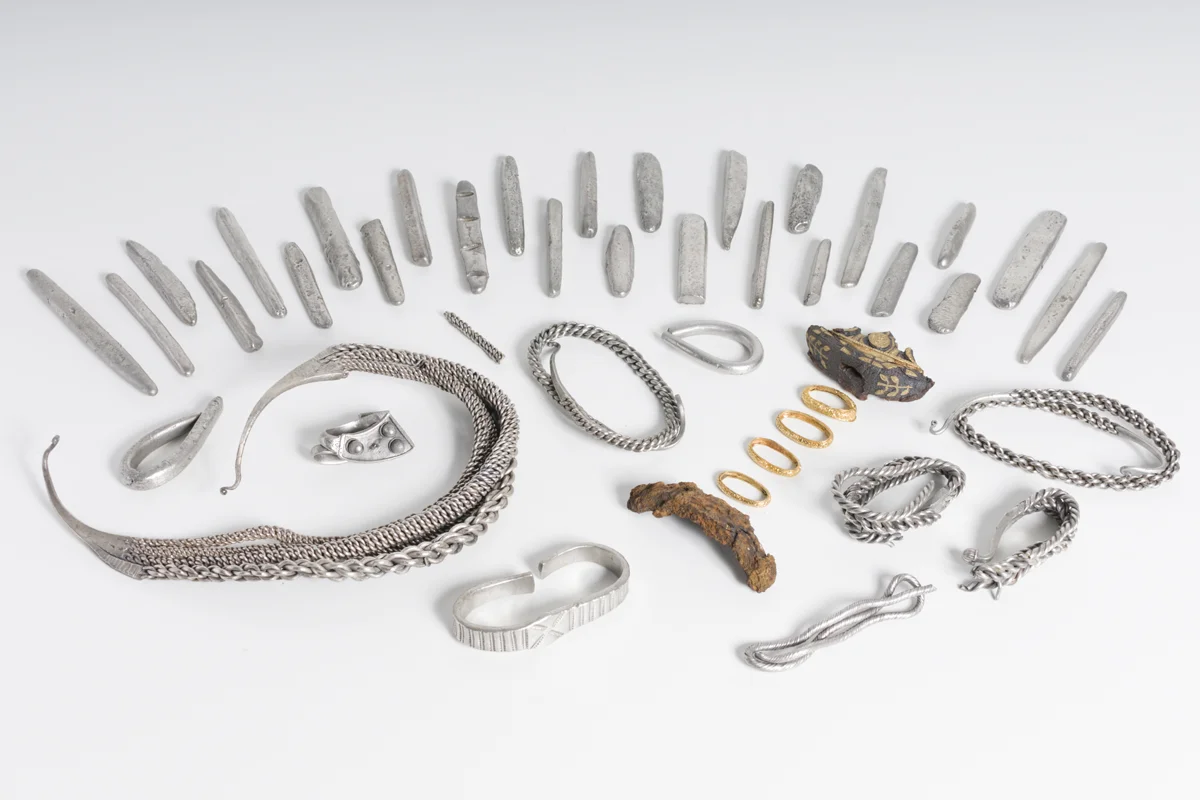A Viking-Age silver hoard unearthed in Bedale, North Yorkshire, is providing new insights into wealth and trading links between England and the Islamic World.
First discovered in 2012 by a metal detectorist in a North Yorkshire field, the hoard (known as the Bedale hoard), consists of a deposit of necklaces, arm-bands, a sword pommel, hacksilver, and 29 silver ingots.
Previous studies have dated the hoard to the late 9th to early 10th centuries AD, predating both the nearby Cuerdale Hoard and the Vale of York Hoard.
New research, led by Dr Jane Kershaw, Associate Professor of Viking Age Archaeology at the University of Oxford’s School of Archaeology, reveals that much of the silver in the hoard originated not from local plunder, but from far-flung trade networks stretching deep into the Islamic world.
Using lead isotope and trace element analyses, researchers traced the origins of the silver. While most derived from western European coinage — likely Anglo-Saxon and Carolingian money obtained through raids or ransom — a significant proportion came from Islamic dirhams minted in regions corresponding to modern-day Iran and Iraq.
This Middle Eastern silver reached Scandinavia via the eastern trade routes known as the Austrvegr, before continuing to Viking-settled areas in England. In total, nine ingots — nearly a third of the hoard — matched silver from the Islamic Caliphate.
Dr Kershaw explains: “Most of us tend to think of the Vikings primarily as raiders, who looted monasteries and other wealthy places in search of wealth. What the analysis of the Bedale hoard shows is that that is only part of the picture.”
The analysis also reveals evidence of advanced Viking metalworking. Some silver was refined with locally sourced lead, particularly from the North Pennines. One especially striking piece, a large twisted-rod neck-ring, appears to have been cast in northern England using a blend of eastern and western silver, symbolising the fusion of cultures and economies.
This discovery adds to growing evidence that Viking wealth came from a combination of military and commercial strategies. While raiding and tribute extraction remained key, they were part of a broader economic system that included importing, melting down, and recasting foreign silver into standardised bullion for use in trade.
The Bedale hoard underscores the deep integration of Viking-Age England into a Eurasian economic network. It also demonstrates the power of modern scientific techniques to shed light on the complexity of early medieval trade and settlement.
As Dr Kershaw notes, imagining Bedale as a bustling node in a network connecting Yorkshire to Baghdad and beyond challenges the simplistic “Viking raider” stereotype — revealing instead a people deeply embedded in global commerce over a thousand years ago.
Header Image Credit : York Museums Trust
Sources : University of Oxford







